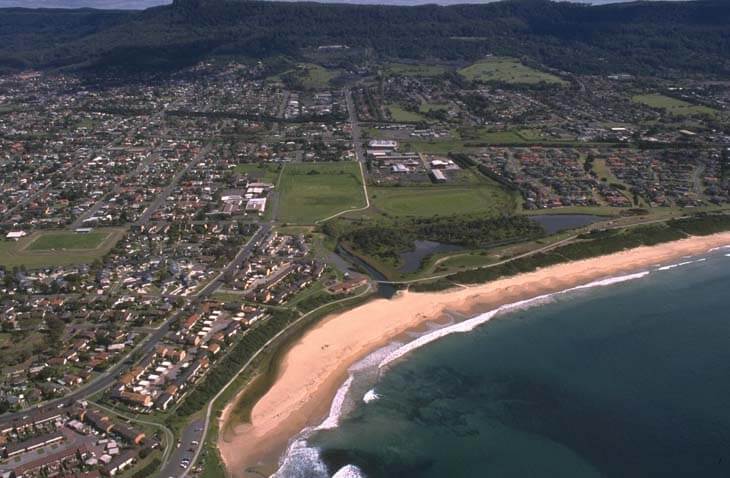Bellambi Gully estuary is located south of Sydney in North Wollongong. It is classed as a creek with an entrance that is intermittently open and closed to the ocean.
Water quality report card
As part of our water quality monitoring program we assess the water quality and ecosystem health of an estuary using a range of relevant indicators. We sample a subset of the estuaries between Wollongong and the Victorian border every 3 years. The most recent sampling in Bellambi Gully was completed over the 2022–23 summer, when 2 sites were sampled on a monthly basis.
Algae
Water clarity
Overall grade
This report card represents 2 water quality indicators that we routinely measure: the amount of algae present and water clarity. Low levels of these 2 indicators equate with good water quality. The numerical scores for these 2 indicators are averaged to give the overall grade.
The report card shows the condition of the estuary was poor with:
- algae abundance graded poor (D)
- water clarity graded poor (D)
- overall estuary health graded poor (D).
Grades for algae, water clarity and overall are represented as:
- A – excellent
- B – good
- C – fair
- D – poor
- E – very poor.
Go to estuary report cards to find out what each grade means, read our sampling, data analysis and reporting protocols, and find out how we calculate these grades.
We have monitored water quality in the Bellambi Gully estuary since 2014. This table shows the water quality grades for this estuary over that time.
| Year | Algae | Water clarity | Overall grade |
|---|---|---|---|
| 2022–23 | D | D | D |
| 2014–15 | D | E | E |
Physical characteristics
| Estuary type | Creek |
|---|---|
| Latitude | –34.37 (ºS) |
| Longitude | 150.92 (ºE) |
| Catchment area | 6.5 km2 |
| Estuary area | 0.02 km2 |
| Estuary volume | 3.4 ML |
| Average depth | 0.2 m |
Notes: km2 = square kilometres; m = metres; ML = megalitres.
Water depth and survey data
Bathymetric and coastal topography data for this estuary are available in our data portal.
Land use
Urban development is the dominant land use in the Bellambi Gully catchment, which includes the towns Bellambi and Russell Vale. Over 80% of the catchment is disturbed for urban development, grazing and areas of rural residence. About 12% of the upper catchment is forested.
National and marine parks
- There is no conservation area in this catchment.
- There is no marine park associated with the Bellambi Gully estuary.
Community involvement
- Landcare Illawarra is a community-based organisation that supports volunteers who want to get involved in conservation and environmental work.
- There are over 60 bushcare groups in the Wollongong area. Bushcare volunteers help regenerate and care for local bushland.

Aerial view of Bellambi Gully.
Local government management
Local councils manage estuaries within their area. Where an estuary is attached to a marine park, marine park management teams are responsible for ensuring compliance with marine park zoning.
Wollongong City Council manages this estuary.
Threatened species
Estuaries are important to our native animals as they provide food, shelter and breeding grounds.
Read more about the biodiversity in our estuaries.